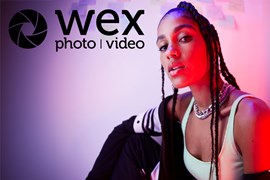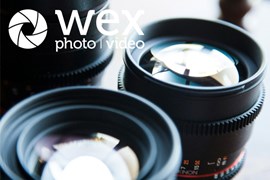
If you’re starting to feel a little alone in your photo world, it’s time to get your photography noticed. With more and more content of all kinds competing for everyone’s attention, the idea of someone taking time out of their day to view your humble images can feel rather… quaint. But this is a fallacy – you have as much a right to get your stuff seen as anyone else. You might just need to work a little harder to make it happen.
At Wex, our team of writers have been living and breathing photography for years – and we know all about how easily you can feel like you’re just tossing pictures into the void. So, here we’ve collated a few of our top tips on how to make your images stand out and get noticed. We’ve focused on Instagram in part as that is still where a lot of photographers congregate, however we’ve also looked at other avenues you can explore to get your stuff seen.
Quick Navigation
Get noticed on Instagram: our top tips
Instagram is a busier place than ever, and trying to build up a following on the platform can sometimes make you feel like Sisyphus pushing his rock uphill. However – don’t get discouraged. While there’s no surefire way to guarantee yourself a big Instagram following, there are a few tips and tricks for maximising your engagement, and getting your images in front of more people’s eyes.
Here are our writers’ tips for getting noticed on Instagram…
Storytelling
One of the key healthy Instagram practices is that you tell a story with your posts. Now, this can be from post-to-post but there should be continuity across your entire feed. For example, some Instagram influencers have a particular colour palette that will be uniform across the entire feed and people will buy into these looks. Before you know it, it has become a trend. Equally, you will want the content to be different and unique every time with the perfect caption that grabs the attention of the idle scroller.
We’re all photographers and videographers at heart; so when posting images or videos, give it a distinctive caption and a bit of a back story of how it came to be. A great habit to get into that will not only be useful for your posting, but will also help develop you as an artist, is to analyse your work. Explore what went right and what went wrong. Make mistakes. Fail dramatically, and turn it into a positive. These mistakes are a good thing and you will learn from them! Sharing your thoughts and analysis can become mutually beneficial to you, and your audience.
Hashtagging and location tagging
When the algorithm came into action, it stopped the chronological flow of everyone’s Instagram feed so you couldn’t just post at the right time and reap the benefits (more on that later). With this, the importance of hashtagging grew exponentially. Hashtagging is probably the most important thing to know about when it comes to growing a profile from the ground up.
You need to be selective when choosing your hashtags. It often seems like the best choice is to go for the most obvious tags with the most associated posts. But the fact is that new posts will be added to that tag so often (we’re talking every second for some of the most popular tags) that your post is likely to get buried very quickly. By all means, do use these popular tags, but you also want to be more specific.
Ponder this – you take a great minimalist photograph of a model using your Fujifilm X-T2 and Fujifilm 35mm F1.4, and you want to post it on your Instagram feed. The immediate thought might be to use the hashtag #photography. This tag has a grand total of 479 million posts. This oversaturated tag is going to highlight your image for all of a few minutes before it is buried under the next flood of tags. It’s also going to feature a lot of things that will not relate to your image in any way, e.g. someone’s dog, a random inspirational quote, or (at the time of researching for this blog) a questionable self-portrait of a man on the toilet. I mean, I suppose anything can be photography now… especially on Instagram.
Instead of using #photography, you could use #fujifilmxt2 (716K posts), #minimalistphotography (94.3K posts), #35mm14 (29.7K posts) or even #fujifilmminimalism (about 2K posts). Whilst I wouldn’t advise completely ignoring popular tags, I’d encourage you to incorporate more specific tags too. These will help you seek out people who are more likely to actually engage with your work in a meaningful way, rather than those who simply follow-for-a-follow and then unfollow once it looks like they have more followers than who they are following!
In many genres of photography, there are also popular accounts with their own tags you can use for a chance to have your image shared to a wider audience. If You Leave is a popular one, as is Restore From Backup for analogue work specifically. While these sorts of accounts tend to be popular and over-subscribed, a share from one of them is a good way to get your work in front of a whole new audience. The tag that the team behind the Wex Instagram account use is #ShotByYou – use that, and our content team may well feature your work on our feed. Otherwise, it’s worth looking for accounts that specifically promote work in the sort of genre you’re shooting in, as that’ll greatly increase your chances of being noticed and shared.
Also, something that many photographers neglect is location tagging. Instagram gives you the option to tag your images and videos with a location, and this can be a whole different way to get your images seen – particularly if you are a travel or landscape photographer. People often browse the geotags for places they are interested in visiting, and if your photo represents that place well, it’s bound to get noticed.
Timing
Before the Instagram algorithm calamity, you could plan your posting schedule knowing all your followers, and more, would see your posts. You could post before people went to work or when they had finished work; any time that you’d expect people to go onto Instagram and scroll. However, without going into too much detail, the current algorithm changed things up so that content no longer appears chronologically. So surely it doesn’t matter about timing? Well, it does.
When using a business Instagram account, you have access to insights (via the analytics tab) that shows you when your followers and other users are actively looking at your posts, where they’re from, their gender and age. This data is incredibly useful for helping you understand your post demographic and will show you roughly when you should be posting, but really, this is something that you will have to test and analyse the results. Whilst your account is growing, you will want to consider scheduling posts for when your main audience is looking at your account and use the appropriate hashtags accordingly.
Timings can be different depending on the audience. For example, if your main traffic is coming from the other side of the world, you’ll probably be posting throughout the night – but with the magic of scheduling, this won’t be an issue. On the other hand, in the UK the most ideal time to post for most profiles is 6pm.
Use Stories
You may not get much use out of Instagram’s Stories function – however, it’s a great way to increase the number of your followers that see your posts. Unlike regular grid posts, Stories are presented to users in a (more or less) chronological order, meaning that a follower who missed your post may see it while they’re flicking through Stories. Even if you don’t engage with Stories all that much, get in the habit of sharing a post to your Stories every time you make one – it’s all but guaranteed to get more follower eyeballs on your work.
Video
I know, I know. This is not what you want to hear. You’re a photographer, you like shooting stills, you enjoy the smell of the darkroom chemicals, the click of the shutter, the thrill of the decisive moment. I get it.
But.
The fact is that Instagram has been hugely prioritising video content in its algorithm for some years now, and this trend is showing no signs of slowing. Therefore, if you want to get your stuff in front of as many eyeballs as possible, one of the most effective things you can do is to mix in video with your still images.
This doesn’t mean you have to sell your car to buy a Blackmagic camera, or learn what a LUT is or anything dreadful like that. Instagram’s Reels section (its TikTok clone, if you aren’t familiar) makes it incredibly easy to edit and upload a video, and there are all sorts of ways you can use this to augment and promote your stills work. For instance, you can edit a selection of your images into a slideshow backed with music. Or, you could capture a little behind-the-scenes imagery of your shoot setup. Film photographers in particular are fond of producing little Reels of themselves loading their camera with a fresh roll.
You don’t have to become the next Spielberg or Scorsese in order to use video in ways that can be beneficial to promoting your photography on Instagram.
Get your photography noticed: three quick tips
Looking beyond Instagram, what are some other ways to get your images noticed? Here, we’re going to look at a few ways you can make sure more people get to see your work…
1. Develop a unique selling point
One thing that’s worth thinking about is what is different and unique about your images. Admittedly, it can be hard to find something that has never been photographed before, so maybe it’s about approaching it in a different way. Don’t be afraid to break the rules and be bold and take risks.
There’s a lot of interest at the moment in old-school techniques, so you could always try picking up an old film camera and going analogue. You could visit well-known locations and attempt to put your own spin on them, photographing them in a way they’ve not been photographed before.
2. Join groups, follow friends and try projects
Another great tip is to join as many online communities you can think of that are related to your work and genre. Use whatever social networks you’re on, and look for people and hashtags to follow that are relevant to the genre you work in. Whether you’re on Instagram, Twitter, Threads, Bluesky, Mastodon, Facebook, TikTok or wherever else, chances are good that other photographers in your genre are there too. Flickr is still going too – though it’s not what it once was – as is 500px.
There are also other photography groups and projects worth looking into – some of which can be used to galvanise your creativity. Former Wex blog contributor Hannah Argyle got her start by joining the 365 Project – a year-long photo-journalling project in which participants commit to taking a photo every day. “That was what really challenged me to begin with, to get to grips with different sorts of photography,” she told us. “You also develop quite a community by doing that, and you start to meet people and it becomes more interactive. Because of that, I’ve had sort of a community on Instagram from early on, and then I was made a suggested user by Instagram, which gained me a big chunk. And it’s gone from there!”
The more active you are online, and the more you publicise your work, the more it is likely to get noticed.
3. Enter competitions
There are more photography competitions than ever before, as a lot of groups and organisations have realised it’s a good way to engage with the public, get their message out there, and attract publicity.
Winning a prize gives you a great excuse to contact photography magazines and leading blogs to publicise your victory, but don’t just send them a perfunctory email saying, “Hey look I’ve won this.” Think about some human-interest angles that might get them interested. Did you have to overcome any particular difficulties to get the image? Is there something unusual or interesting about you as a photographer, or the subject?
While there are no guarantees you will win, you can take some practical steps to skew the odds in your favour. Remember that the judges will be looking at thousands of entries as thumbnails to begin with, so think about entering images with strong, clean graphic shapes that will get noticed, whether they are in colour or black and white.
Though competitions vary in style, your images will almost certainly need to be technically competent, so get a knowledgeable friend to check for signs of noise, excessive sharpening and softness.
Don’t obsess too much about technical perfection though, as overall impact is also really important. Make sure you read the rules before entering so you don’t get disqualified over a silly thing, and don’t over-process. Luridly saturated, cartoon-like images are unlikely to make the cut.
Also – remember that you don’t need to win a competition in order for it to have been worth entering. Just getting on a longlist or shortlist will get your work in front of a bunch of new eyeballs, while also giving you a bit of a much-needed confidence boost. There’s no harm in seeking a little validation from time to time. And if an image doesn’t place in one competition, don’t assume it’s worthless garbage to be discarded. Judges are human, after all, and work that isn’t to one person’s taste might be just what a different person is looking for.
Which photography competitions should I enter?
Here are a few popular photo competitions that are well worth entering.
Wex Photo Video Human Impact Awards (#WHIA)
Our very own competition offers an exciting opportunity to share your work and have it seen by a panel of industry professionals. It's free to enter and you could win some amazing prizes including up to £8,000, Sony cameras and have your portfolio professionally printed and exhibited on Brick Lane for a week-long exhibition.
wexphotovideo.com/blog/competitions/human-impact-awards
Amateur Photographer of the Year (APOY)
An annual competition run by one of the UK’s oldest photography magazines. It runs themed rounds every month, giving you a chance to experiment with different genres
Sony World Photography Awards
As well as its famous professional competition, the Sony World Photography Awards also have “Open” categories that absolutely anyone can enter, in all sorts of different genres. There’s a lot of prize money up for grabs, and you may end up with your images exhibited in London’s Somerset House.
Travel Photographer of the Year
With multiple themes and categories available, Travel Photographer of the Year offers a flexible brief for any photographer with an interest in exploring. Keen holiday snapper? You might already have a winning entry on your hard drive!
iPhone Photography Awards
If you’re a keen smartphone snapper, your images might well be good enough to win big at the iPhone Photography Awards, which have now been running for almost two decades.
International Garden Photographer of the Year
For the plant-lovers and green-fingered amongst you, IGPOTY is a great competition for celebrating the beauty of the natural world. The judges are always on the lookout for creativity, so don’t be afraid to think outside the box.







